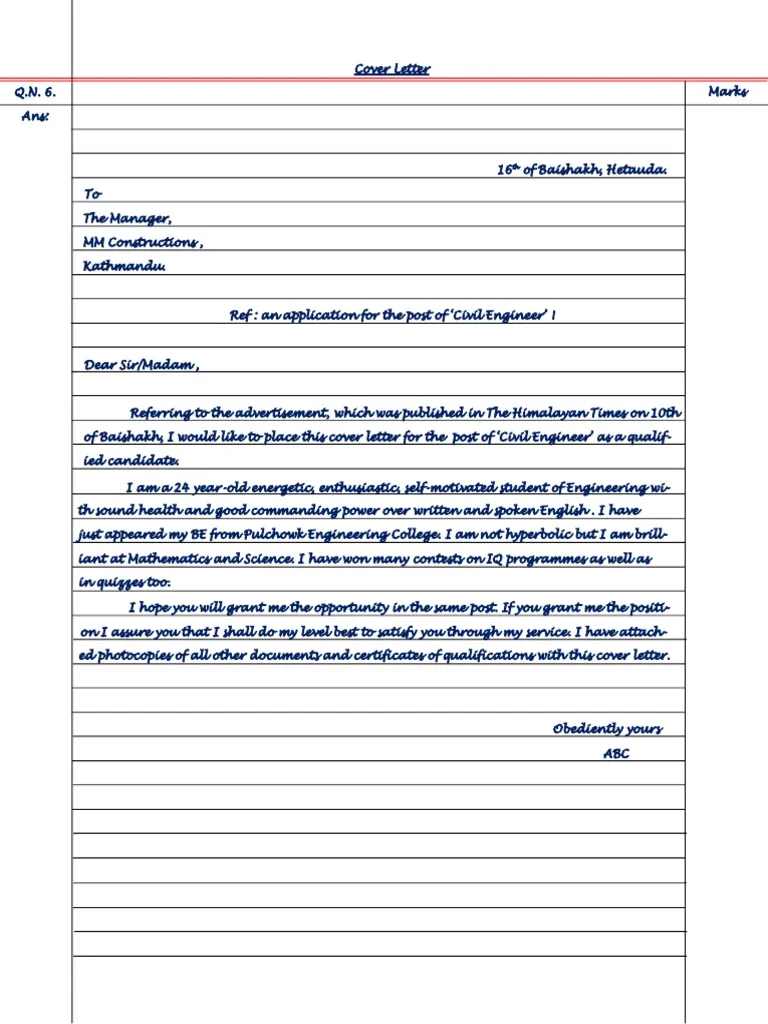Understanding the Importance of a Cover Letter
In the competitive world of job applications, a cover letter is your first opportunity to make a lasting impression. It’s not just a formality; it’s a crucial tool that can significantly impact whether your application gets noticed. A well-crafted cover letter provides context to your resume, allowing you to highlight relevant skills, experiences, and enthusiasm for the specific role. It serves as a sample of your writing and communication skills, setting the tone for your candidacy. Without a strong cover letter, your resume might not receive the attention it deserves, and you could miss out on opportunities. The cover letter is a chance to express your personality and show why you’re the perfect fit for the company and the position.
Why a Cover Letter Matters
A cover letter goes beyond simply restating the information in your resume. It’s a chance to tell your story, demonstrating your understanding of the job and the company’s needs. It showcases your written communication skills, which are essential in almost every professional role. A cover letter enables you to explain any gaps in your employment history or to address specific requirements mentioned in the job description. Furthermore, it allows you to express your genuine interest in the role and the organization, setting you apart from other applicants. Many employers use cover letters to assess a candidate’s communication, attention to detail, and overall fit with the company culture. A well-written cover letter is your advocate, making a strong case for why you should be interviewed.
First Impression is everything
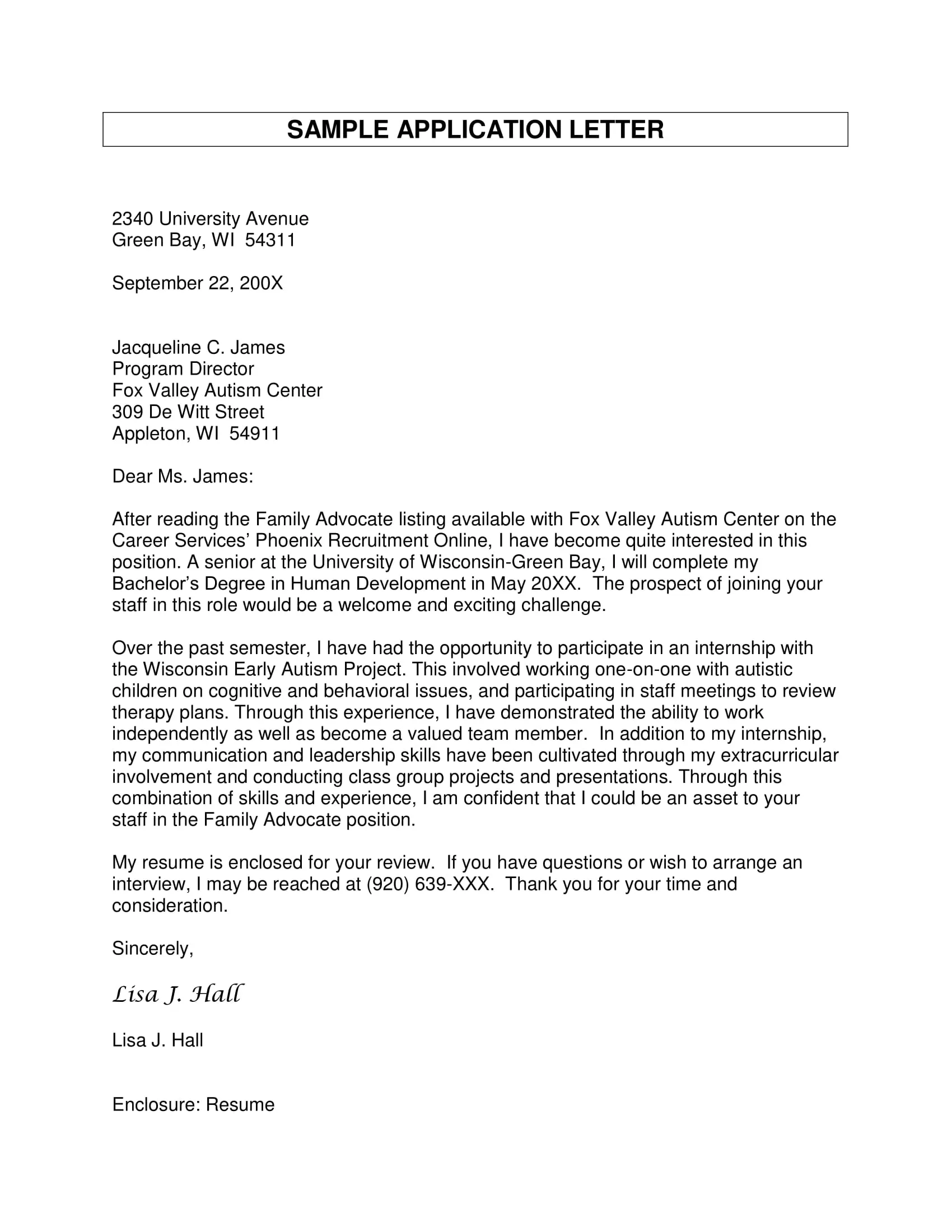
Your cover letter is often the first thing a hiring manager sees, making a strong first impression critical. This initial assessment can influence whether your application proceeds to the next stage. A well-structured and error-free cover letter demonstrates professionalism and attention to detail. It also provides an early indication of your communication abilities and writing style. A compelling opening paragraph can capture the reader’s attention and encourage them to explore your qualifications further. Conversely, a poorly written cover letter with errors or a generic tone can immediately lead to your application being discarded. The goal is to make a positive and memorable first impression, showcasing your value and enthusiasm for the opportunity.
Crafting a Compelling Cover Letter
Creating a compelling cover letter involves several key elements. It should be tailored to each specific job application, demonstrating your understanding of the role and the company. The tone should be professional yet engaging, reflecting your personality and enthusiasm. Focus on highlighting the skills and experiences most relevant to the job description, using specific examples to illustrate your abilities. Ensure the letter is well-organized, with a clear introduction, body, and conclusion. The language should be concise and impactful, avoiding jargon or overly complex phrasing. It’s essential to proofread carefully for any grammatical errors or typos. By paying attention to these details, you can create a cover letter that effectively showcases your value and increases your chances of securing an interview.
Header and Contact Information
The header of your cover letter is more than just a formality; it sets the tone for the entire document. It should include your full name, address, phone number, and professional email address. This information ensures the hiring manager can easily contact you. Additionally, include the date and the recipient’s name and address, which adds a professional touch and shows you’ve taken the time to personalize your application. Keep the header clean and easy to read, using a clear font and sufficient spacing. Ensure your contact information is current and accurate, as this is crucial for the employer to reach you. A well-formatted header demonstrates your attention to detail and professionalism.
Formatting Your Contact Information
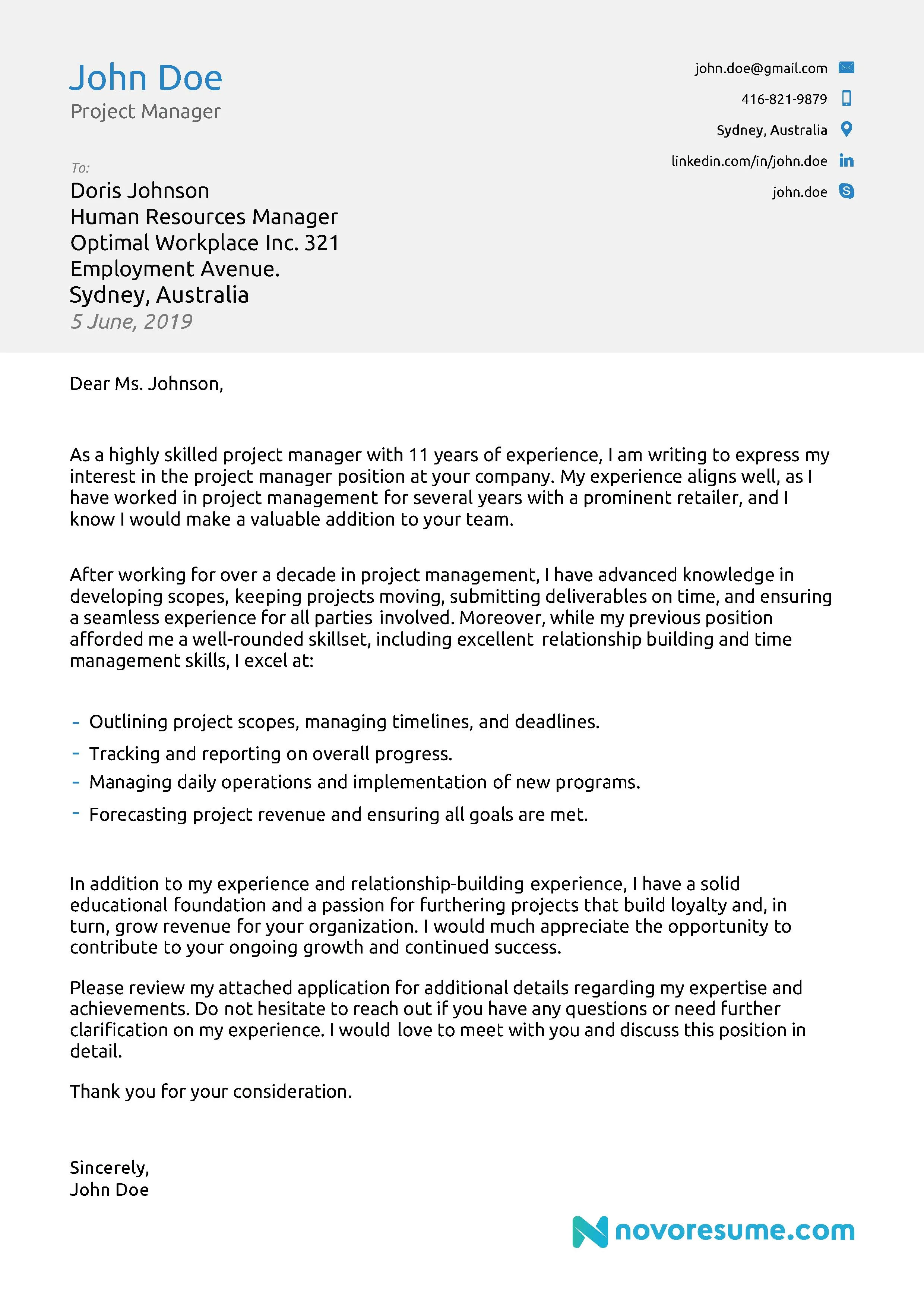
When formatting your contact information, choose a professional font and size that is easy to read, such as Arial, Times New Roman, or Calibri, with a font size between 10 and 12 points. Your name should be prominently displayed at the top. List your address, phone number, and email address below, ensuring they are aligned and spaced appropriately. Use a professional email address; avoid informal or outdated addresses. If you have a LinkedIn profile, include the URL to provide the hiring manager with additional information about your professional background. Ensure consistency in formatting throughout the header and the entire cover letter. Correct formatting shows you pay attention to detail and present yourself as a polished candidate.
Addressing the Hiring Manager
Addressing the hiring manager by name is a crucial element of a personalized cover letter. It demonstrates that you’ve taken the time to research the company and the specific role, showing genuine interest and attention to detail. Whenever possible, find the hiring manager’s name by checking the job posting, the company’s website, or LinkedIn. Using ‘Dear Mr./Ms. [Last Name]’ is a professional and respectful approach. If you cannot find a specific name, use ‘Dear Hiring Manager’ or ‘Dear [Department Name] Team,’ avoiding generic greetings like ‘To Whom It May Concern,’ which can make your application appear impersonal. Personalizing the greeting shows that you value the opportunity and have made an effort to connect with the company.
Researching the Company and Hiring Manager
Researching the company and the hiring manager is a vital step in crafting a successful cover letter. This research allows you to tailor your letter to the specific needs and values of the organization. Visit the company’s website to learn about its mission, values, and recent activities. Explore their LinkedIn page or other social media platforms to understand their culture and stay up to date with their latest news. If possible, research the hiring manager’s background and experience on LinkedIn. This will allow you to mention specific aspects of the company or the hiring manager’s role that resonate with you. This level of personalization shows your genuine interest and demonstrates your proactive approach to the job application process.
Opening Paragraph — Grabbing Attention
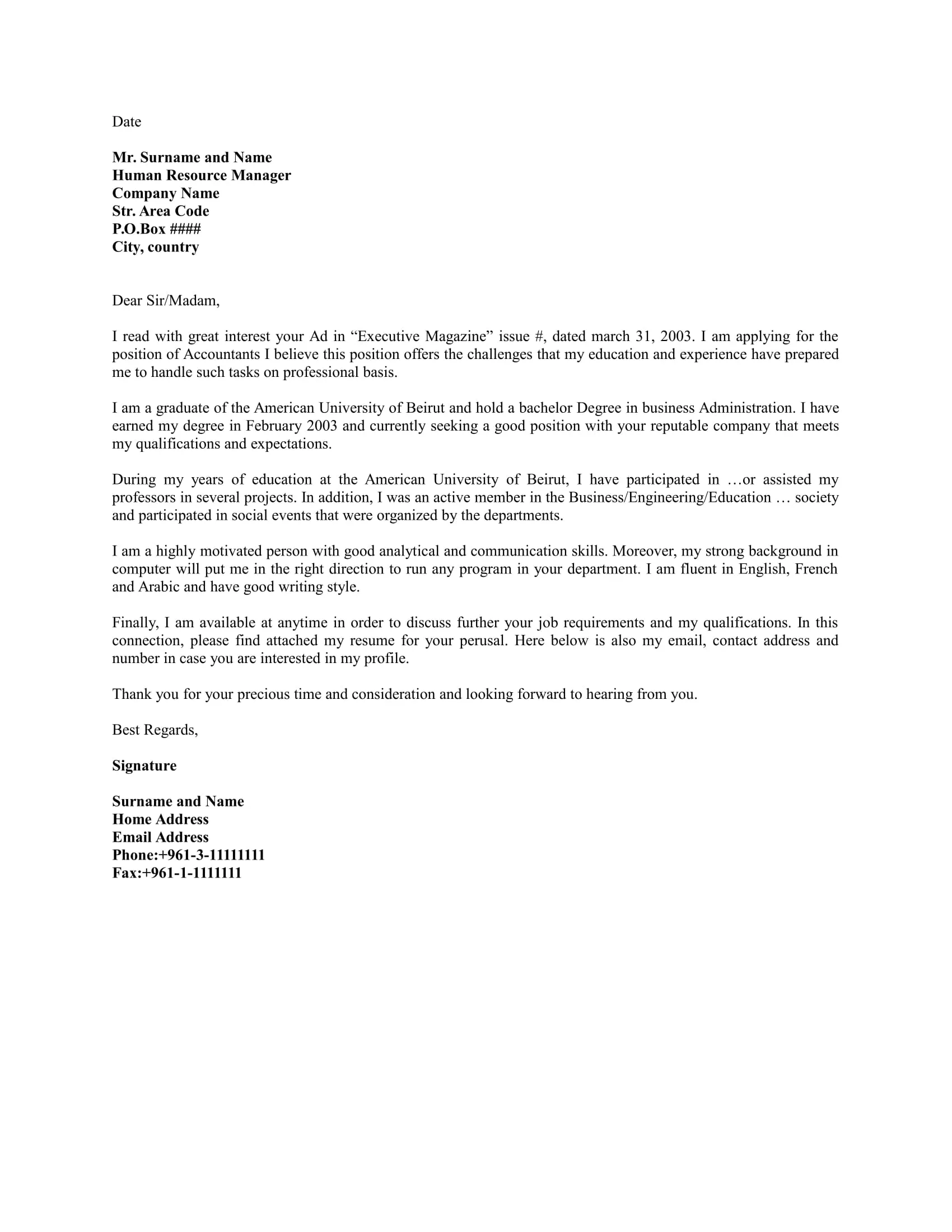
The opening paragraph of your cover letter is your chance to grab the hiring manager’s attention. It should be concise, compelling, and immediately convey your interest in the role. Start by stating the position you are applying for and how you learned about the opportunity. Then, make a strong statement about why you are the perfect fit. You can highlight a key skill, achievement, or your enthusiasm for the company. Avoid generic openings; instead, show your personality and genuine interest. Clearly state the purpose of your letter and let the reader know what to expect. This initial impression sets the stage for the rest of your application, so make sure it’s impactful and memorable.
Highlighting Your Skills and Experience
The body of your cover letter is where you demonstrate your skills and experience and explain how they align with the job requirements. Focus on the most relevant aspects of your background, using specific examples to illustrate your accomplishments. Describe how you’ve used your skills to achieve positive outcomes in previous roles. Match your qualifications to the requirements listed in the job description, using keywords and phrases from the posting. Provide concrete evidence of your capabilities rather than simply listing them. Explain how your experience makes you a valuable asset to the company. Aim to create a compelling narrative that showcases your suitability for the position.
Show, Don’t Just Tell
Instead of simply stating your skills, use examples to show how you’ve applied those skills in real-world situations. Describe specific projects, tasks, or accomplishments that demonstrate your abilities. Use the STAR method (Situation, Task, Action, Result) to structure your examples, providing context, describing your role, outlining the actions you took, and highlighting the positive outcomes. For example, if you have strong communication skills, describe a situation where you successfully resolved a customer complaint or delivered a presentation that achieved its objectives. By showcasing your skills through concrete examples, you provide more credibility and make a stronger impression on the hiring manager. Demonstrate your value by providing evidence rather than just making claims.
Quantifying Your Achievements

Quantifying your achievements adds credibility and impact to your cover letter. Whenever possible, use numbers and metrics to illustrate your accomplishments. Instead of saying ‘improved sales,’ specify by what percentage, for example, ‘Increased sales by 15% in the first quarter.’ If you managed a project, include the budget or the number of people involved. If you improved efficiency, state the amount of time or resources saved. Quantifiable results demonstrate the tangible value you bring to an organization and make your achievements more persuasive. Using numbers also helps the hiring manager quickly understand your impact and assess your qualifications. Make sure your achievements are relevant to the job requirements and add value to your application.
Tailoring to the Job Description
Tailoring your cover letter to the specific job description is essential for demonstrating your understanding of the role and the company’s needs. Carefully review the job posting, identifying the key skills, qualifications, and responsibilities. Customize your cover letter to address these requirements directly. Use the same keywords and phrases from the job description to show that you understand what the employer is looking for. Highlight the experiences and skills most relevant to the position, emphasizing how you can meet the company’s needs. Avoid using a generic cover letter; instead, demonstrate that you have researched the role and the company and are genuinely interested in the opportunity. By tailoring your letter, you significantly increase your chances of making a strong impression and securing an interview.
Closing the Cover Letter
The closing paragraph of your cover letter is your final chance to make a positive impression. It should reiterate your interest in the position and summarize your key qualifications. Express your enthusiasm for the opportunity and reiterate your interest in the position. Thank the hiring manager for their time and consideration. Clearly state your desire for an interview and how you can be reached. Proofread the closing paragraph carefully to ensure it is professional and error-free. Your closing statement should be confident and leave the hiring manager with a positive final impression. This final section reinforces your suitability for the role and encourages the next step in the hiring process.
Expressing Enthusiasm and Next Steps
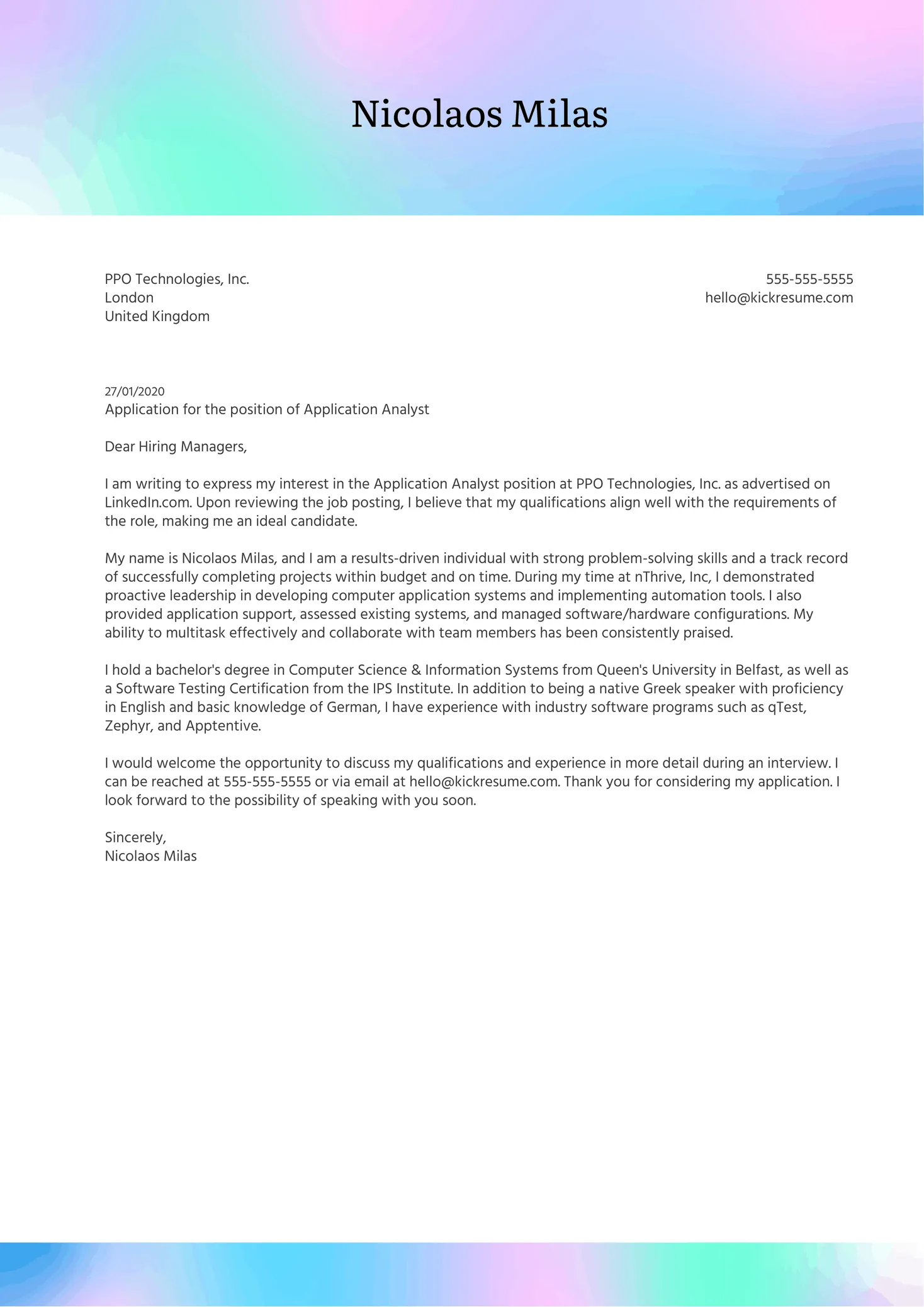
Expressing your enthusiasm for the position and clearly stating your desire for an interview are crucial elements of the closing paragraph. Show your genuine interest in the role and the company. State that you are eager to discuss your qualifications further and elaborate on how you can contribute to their team. Include a call to action by expressing your availability for an interview and providing your contact information. Reiterate your appreciation for their time and consideration, making it clear that you are looking forward to hearing from them. By expressing your enthusiasm and clearly outlining the next steps, you encourage the hiring manager to take the necessary actions to move forward with your application.
Proofreading and Editing
Proofreading and editing are essential steps in creating a successful cover letter. Errors in grammar, spelling, and punctuation can undermine your professionalism and detract from your qualifications. Review your cover letter carefully for any mistakes. Read the letter aloud to catch any awkward phrasing or unclear sentences. Ask a friend, family member, or career advisor to review your letter for feedback and suggestions. Pay close attention to the details. Check the spelling of names, company names, and job titles. Use a grammar checker, but don’t rely on it entirely; proofread the document yourself. Proper proofreading ensures that your cover letter is polished, error-free, and conveys your professionalism.
Common Mistakes to Avoid
Avoiding common mistakes is critical to writing a compelling cover letter. Several pitfalls can undermine your application. Ensure you avoid these pitfalls. Generic cover letters fail to demonstrate that you have researched the job or the company and they often fail to get the attention of a hiring manager. Errors in grammar, spelling, and punctuation can make you appear careless and unprofessional. Not tailoring your cover letter to the specific job requirements shows that you don’t understand the role or the company’s needs. Overusing jargon or overly complex language can make your letter difficult to understand. Length and format are also essential, keep the cover letter concise and easy to read. By avoiding these common mistakes, you’ll make a strong first impression and increase your chances of getting an interview.
Grammar and Spelling Errors
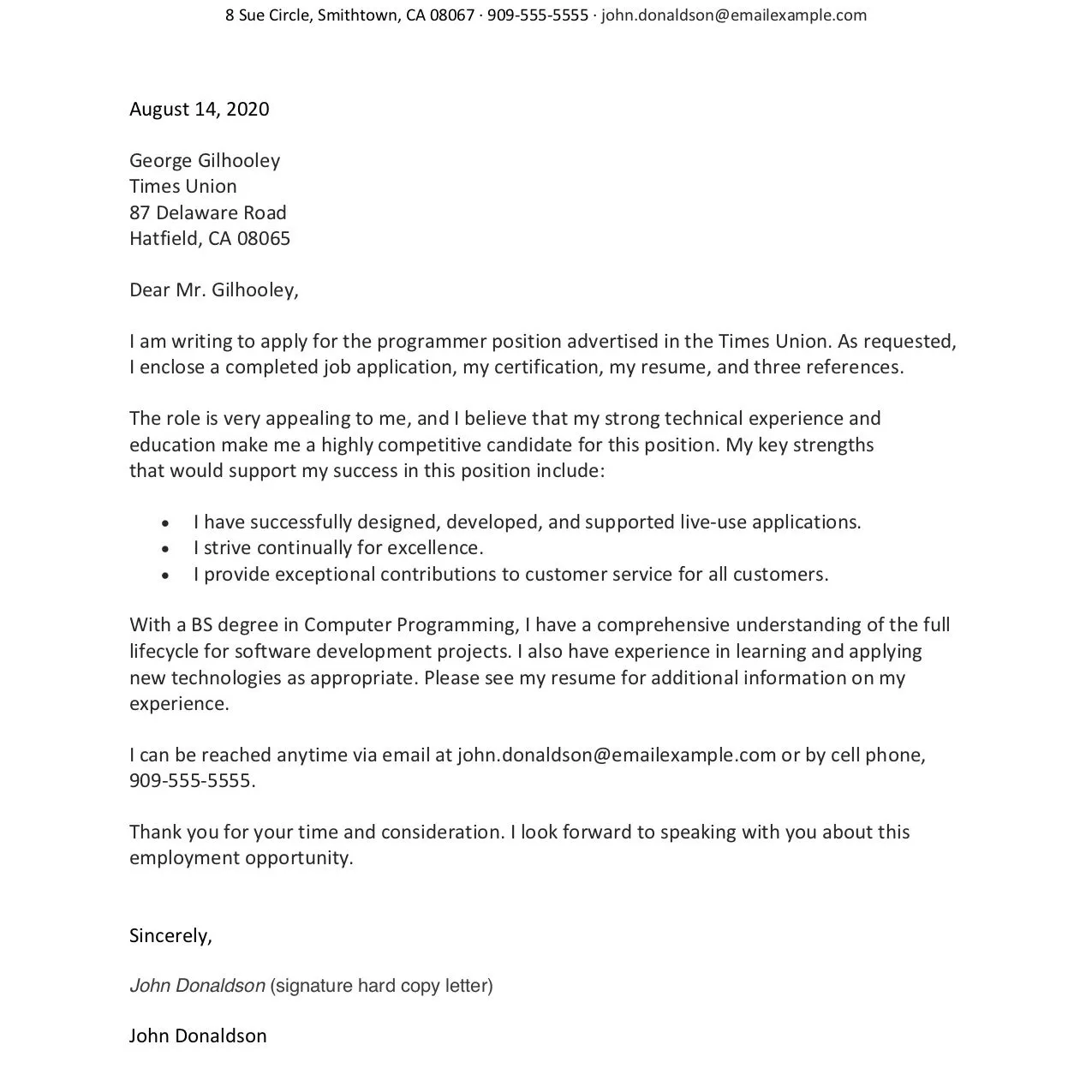
Grammar and spelling errors can significantly damage your credibility and undermine the impression you make on potential employers. Ensure your cover letter is free of typos, grammatical errors, and punctuation mistakes. Proofread carefully for these errors, even after using a grammar checker. Read your cover letter aloud to catch any awkward phrasing or mistakes that you might have missed. Pay attention to details such as subject-verb agreement, correct use of pronouns, and accurate spelling. Seek a second pair of eyes. Ask a friend, family member, or career advisor to review your cover letter. By ensuring your cover letter is free of errors, you demonstrate professionalism and attention to detail, which are essential qualities in any job application.
Generic Cover Letters
Generic cover letters that are not tailored to the specific job or company fail to impress hiring managers. Recruiters can immediately spot these letters, which often use a one-size-fits-all approach. Such letters typically fail to demonstrate that you have researched the role, the company, or its culture. They also lack personalization. The hiring manager needs to understand why you are a good fit for this specific position. Instead of sending a generic letter, customize each cover letter to match the requirements. Highlight the skills and experiences most relevant to the job description, demonstrating your genuine interest and suitability for the role. Make sure you show how you can contribute to the organization’s success. By personalizing your cover letter, you can make a more impactful impression.
Length and Format
The length and format of your cover letter are crucial aspects of its effectiveness. Aim for conciseness. Your cover letter should generally be one page long, unless specifically requested otherwise. Make sure the format is easy to read, using a clear font and appropriate spacing. Use short paragraphs and bullet points to break up the text and make it more accessible. Avoid overwhelming the reader with large blocks of text. Maintain a professional tone. Use a formal letter format with your contact information at the top. Follow this with the date and the hiring manager’s contact information. By keeping the letter brief, focused, and well-formatted, you increase the chances that the hiring manager will read and understand your application.
Using Action Verbs Effectively
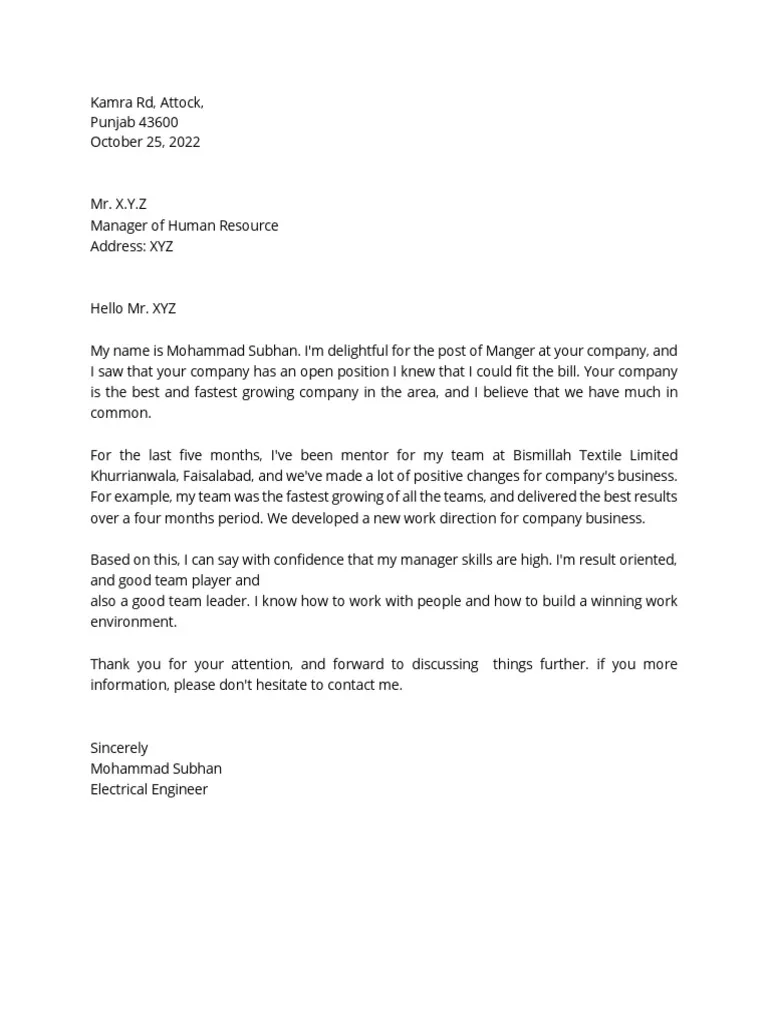
Using action verbs effectively in your cover letter helps to make your accomplishments more impactful. Action verbs bring your experiences to life, making your descriptions more vivid and compelling. Start each sentence describing your achievements with a strong action verb. For example, use verbs like ‘managed,’ ’led,’ ‘developed,’ ‘implemented,’ or ‘achieved.’ Avoid passive language. Instead, emphasize what you did and the results you achieved. Action verbs make your cover letter more dynamic and show what you are capable of doing. Make sure to use action verbs that are relevant to the job requirements. This practice shows the hiring manager what you did and how you can apply your skills to the role. The right action verbs can turn your cover letter into a powerful tool for showcasing your skills.
